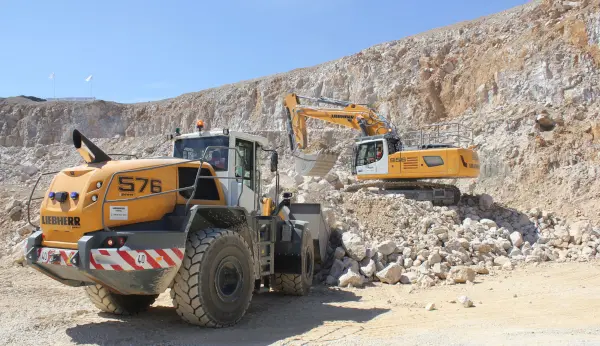Unique restoration project at Tarmac’s Swanworth Quarry
Tarmac are currently spearheading an ambitious eco-friendly restoration project to enhance the environment in one of the first initiatives of its kind in the UK.
The firm has consulted a team of environmental specialists ahead of launching the restoration project at Swanworth Quarry, which is located within an Area of Outstanding Natural Beauty in Dorset. The quarry also lies adjacent to a stretch of the Dorset coastline which forms part of the Jurassic Coast, a designated World Heritage Site.
Tarmac’s project comes after recent reports that Britain’s rarest flowers and wild plants, which were once commonly found in limestone areas, are facing a battle for survival because of a lack of proper action to save them.
The restoration project at Swanworth will involve the use of rare grassland seeds collected from a nearby SSSI to sow at the quarry to create a unique area of limestone grassland.
The species to be sown will include crosswort, corky-fruited water-dropwort, thyme and flaxes, and will provide an important habitat for a diverse range of mammal, bird and butterfly species. In order to create the new area of limestone grassland as it would have been originally, the research team has even assessed how diverse the seed mix should be and at what rate it should be sown.
Derek Haden, manager of Swanworth Quarry, said: ‘The land has provided society with valuable mineral supplies for decades and now is our chance to give something back by restoring the area to a species-rich limestone grassland.
‘In the future we hope to see the entire area of the quarry restored so it becomes one large, unbroken area of limestone grassland, merging with the adjacent SSSI.’
Explaining the significance of the planting, Dr Barbara Smith of the Habitats Research Trust said: ‘This is one of the largest plantings of its kind in the UK. We have found that plant origin is an important factor in determining the success of any planting programme. In this case, the planting includes some rare species that have seriously depleted in number over the past 50 years.'
By collecting the seeds locally, propagating them and sowing them into the restored areas of land by hand, we will ensure that the restoration project has the best chance of success.’



